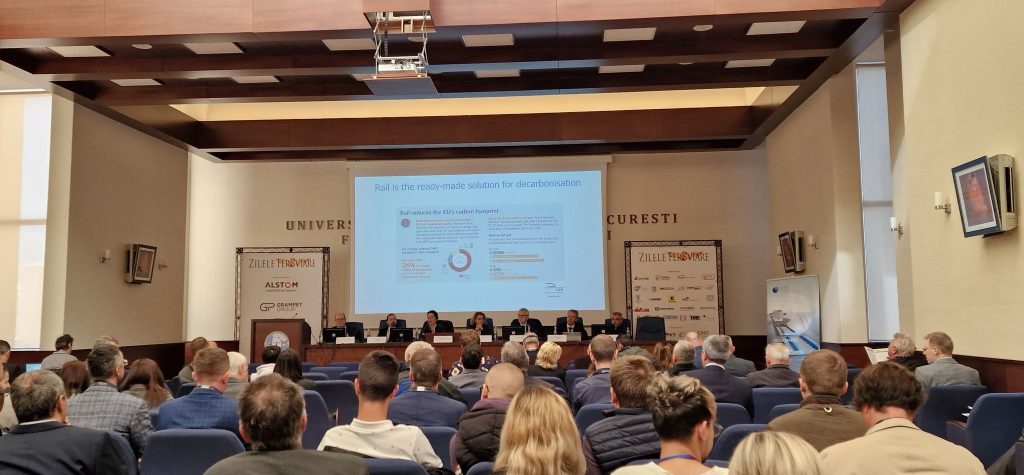
Rail is key to reduce the CO2 emissions and to answer freight and passenger demands and has an important role to create a digital transport sector. Rail’s direct emissions account for less than 0.4% of transport emissions and accounts for only 1.8% of EU’s transport energy consumption while it carried 17% of freight and 8% of passenger volume in 2019. “To explore rail’s full potential to decarbonise the entire transport sector to achieve EU’s Green Deal, massive investment is needed to modernise and expand the rail networks. Now it is the time as there has never been so much attention to railways and it should continue like this,” Alberto Mazzola, the Executive Director of CER said at Railway Days Summit organised by Club Feroviar in partnership with Politehnica University of Bucharest, with the support of Romanian Railway Industry Association (AIF).
The revision of TEN-T Regulation is important to support the European connectivity including multimodality and connected urban nodes, as well to boost the economy. The revision sets three deadlines which include the completion of the Core Network in 2030, the extension of Core Network by 2040 and the completion of the Comprehensive Network in 2050.
The revision also means more investment for railway infrastructure projects which will be essential to achieve the targets set by the Sustainable and Smart Mobility Strategy highlighting the doubling of high-speed rail traffic by 2030 and triple it by 2050. “This is a great ambition but to increase the high-speed traffic means an expanded network with increased connections across the European Union. To double the high-speed traffic means more investment and also a comprehensive strategy. We need a high-speed master plan to achieve these targets,” CER Executive Director said.
Doubling high-speed rail traffic by 2030 will require at least 73% increase in the current network length of 11.526 km.
As there is an insufficient focus on high-speed rail in the TEN-T Regulation, CER, in cooperation with MEP Dominique Riquet, Co-Rapporteur on the TEN-T revision, held an event at the European Parliament in October called for a high-speed masterplan.
This modern infrastructure will connect capitals and major cities including the airports, supporting high traffic volume and will better connect along main European corridors.
Too support the creation of a truly and expanded high-speed rail network, CER, UNIFE, ALLRAIL, and EU-RAIL signed a Memorandum of Understanding under which a study will be developed to support a smart and affordable high-speed rail services in the EU. The study is to demonstrate the significant benefits deriving from the completion of a European high-speed rail network connecting the capitals and major cities of Europe. In addition, the network will contribute to the creation of a sustainable transport system reducing the emissions of the entire European transport sector.
During the event held in Bucharest on October 18-19, 2022, Alberto Mazzola, also highlighted that the modal shift towards railways requires investments on digitalisation to enable the Green Deal. Railway industry demonstrates that the new solutions and technologies such as Digital Automatic Coupling (DAC), Digital Platforms (DP) which allows operational data exchange across the EU to enable seamless transport, the Digital Capacity Management (DCM), Automatic Train Operation (ATO) and the deployment of the ERTMS are essential to develop and to decarbonise the transport sector.
Share on:



